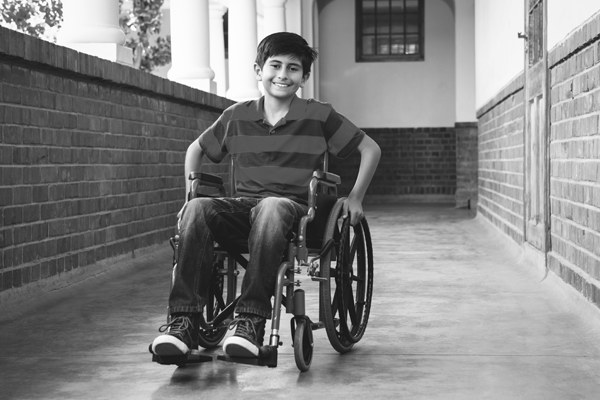Quality of Life in Pediatric Patients With Non-ambulatory Cerebral Palsy and Epilepsy
Quality of Life in Pediatric Patients With Non-ambulatory Cerebral Palsy and Epilepsy https://pediatricsnationwide.org/wp-content/uploads/2022/08/AdobeStock_79221054-Neuro-1.png 600 400 Mary Bates, PhD Mary Bates, PhD https://secure.gravatar.com/avatar/c6233ca2b7754ab7c4c820e14eb518c8?s=96&d=mm&r=g- August 31, 2022
- Mary Bates, PhD

Study indicates that quality of life in young people with non-ambulatory cerebral palsy decreases with the use of more antiseizure medications.
In a new study, researchers from Nationwide Children’s Hospital assessed the relationship between epilepsy-specific characteristics and proxy-reported health-related quality of life in children and young people with non-ambulatory cerebral palsy. The findings indicate that health-related quality of life is lower with increasing numbers of antiseizure medications.
Around half of people with the movement disorder cerebral palsy (CP) will develop epilepsy at some point. Epileptic seizures may negatively impact one’s quality of life. However, antiseizure medications can cause side effects that also impact functioning and quality of life.
The Cerebral Palsy Research Network was founded to accelerate clinical investigation for CP and establish a clinical registry in the United States.
“Our goal is to capture all the clinical, phenotypic data on kids with CP that we can so we can look at practice variation across centers and conduct research on best practices and quality improvements,” says Garey Noritz, MD, division chief in the Complex Health Care Program at Nationwide Children’s and the new study’s senior author.
For the new study, Dr. Noritz and colleagues evaluated the association between epilepsy characteristics and health-related quality of life in 164 children and young people with non-ambulatory CP and epilepsy. The researchers used the Caregivers Priorities and Child Health Index of Life with Disabilities (CPCHILD) to measure caregivers’ perceptions of the health status and overall well-being in children with severe CP.
Notably, the researchers found that CPCHILD scores were lower for those taking more antiseizure medications. According to Adam Ostendorf, MD, a pediatric neurologist at Nationwide Children’s and lead author of the study, treatment with more than two concurrent antiseizure medications is unlikely to benefit people with drug-resistant epilepsy, yet overtreatment exists.
“When we controlled for other variables, factors like seizure frequency and other comorbidities, we still found that the more antiseizure medications a person with CP is taking, the worse their function and participation in life,” he says.
Dr. Ostendorf, who is also an associate professor of clinical pediatrics and neurology at The Ohio State University College of Medicine, says it may seem counterintuitive to decrease antiseizure medications for patients with epilepsy, but it could help improve patients’ lives.
“The next step is a prospective intervention study to see if we can improve CPCHILD scores in patients with non-ambulatory CP by weaning them off of some of their medications,” he says.
“People might think that the severity of someone’s motor disability would be the biggest determinant of their quality of life,” says Dr. Noritz, who is also a professor of pediatrics at The Ohio State University College of Medicine.
“What we are finding is the big determinants are factors like the severity and frequency of their seizures and their medication burden. Our ability to improve a person’s motor function is often fairly limited, particularly after early childhood. But the issues that we can work on, such as overmedication, may actually make a bigger difference in someone’s quality of life.”
Reference:
Ostendorf AP, Axeen ET, Eschbach K, Fedak Romanowski E, Morgan LA, Gross P, Narayanan UG, Glader L, Noritz G; CEREBRAL PALSY RESEARCH NETWORK. Epilepsy and proxy-reported health-related quality of life in children and young people with non-ambulatory cerebral palsy. Developmental Medicine and Child Neurology. 2022 Jul 12. doi: 10.1111/dmcn.15336.
About the author
Mary a freelance science writer and blogger based in Boston. Her favorite topics include biology, psychology, neuroscience, ecology, and animal behavior. She has a BA in Biology-Psychology with a minor in English from Skidmore College in Saratoga Springs, NY, and a PhD from Brown University, where she researched bat echolocation and bullfrog chorusing.
-
Mary Bates, PhDhttps://pediatricsnationwide.org/author/mary-bates-phd/December 27, 2016
-
Mary Bates, PhDhttps://pediatricsnationwide.org/author/mary-bates-phd/
-
Mary Bates, PhDhttps://pediatricsnationwide.org/author/mary-bates-phd/
-
Mary Bates, PhDhttps://pediatricsnationwide.org/author/mary-bates-phd/






